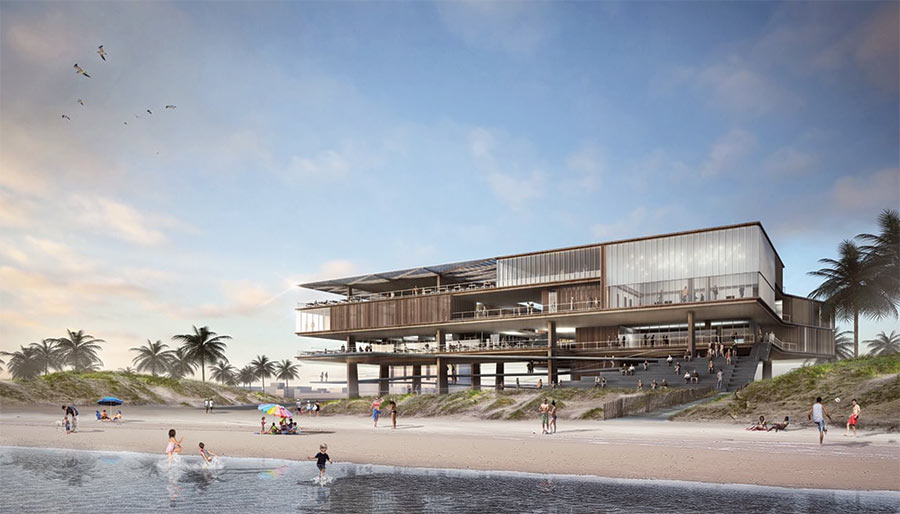
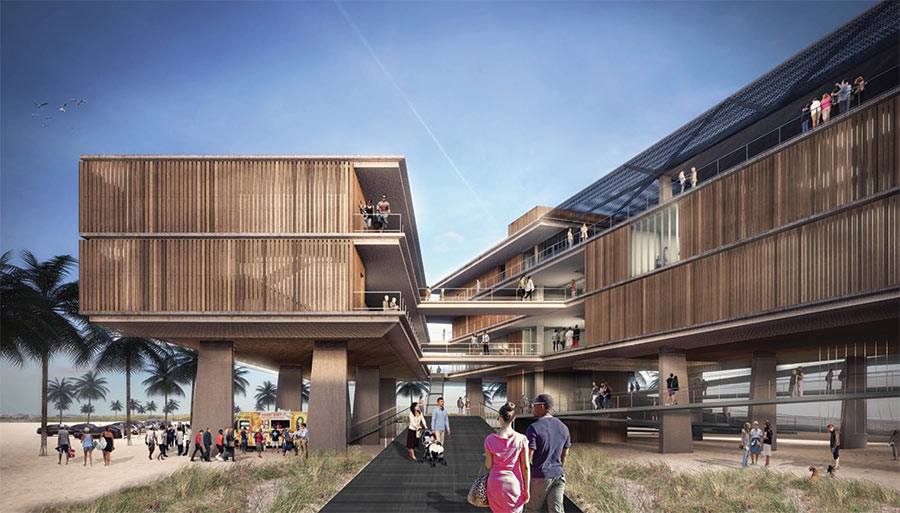
The new pavilion shown in the renderings at top is what Galveston’s Park Board of Trustees want to plant on Stewart Beach, near the end of Broadway and Seawall Blvd. The structure would reorganize the mix of concessions, patrol facilities, parks offices, storage, restrooms, and community meeting space that comprise an existing beach house into 2 adjacent structures suspended above a series of promenades and linked by overhead walkways.
A site plan of the beach from New York architects Rogers Partners shows where the new complex — along with a separate garage and welcome center would go relative to the existing structures that are set to be demolished:


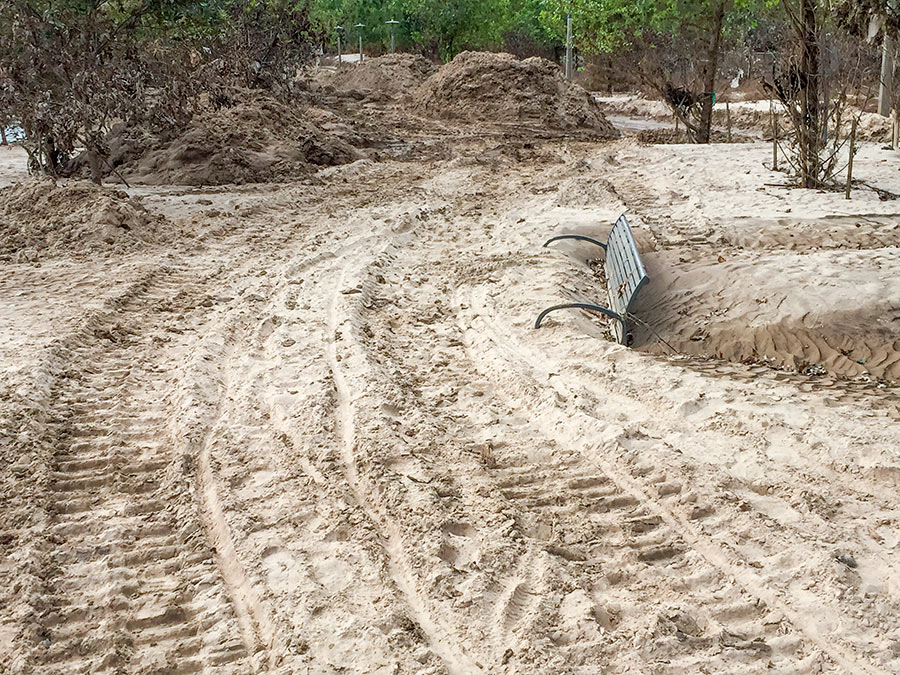
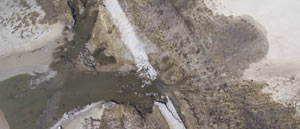 The part of Texas “[where] storms are what you talk about” is the subject of John Nova Lomax’s dispatch this week in Texas Monthly — more specifically, the 16-mile stretch of coast where the state gave up on rebuilding SH 87 after the last of a series of hurricane washouts in the 1980s. Amid nude beach signage, dolphin carcasses, and the rusting remains of pipelines and 4-wheelers, Lomax meditates on the idea that the battered stretch of coast, where Texas’s beaches and barrier islands begin dissolve away into a Louisiana-style tangle of eroding wetlands, “once functioned as a seawall: there was a natural ridgeline made of shells and sand that was used as a trail by Native Americans, then Spaniards, then Texans.
The part of Texas “[where] storms are what you talk about” is the subject of John Nova Lomax’s dispatch this week in Texas Monthly — more specifically, the 16-mile stretch of coast where the state gave up on rebuilding SH 87 after the last of a series of hurricane washouts in the 1980s. Amid nude beach signage, dolphin carcasses, and the rusting remains of pipelines and 4-wheelers, Lomax meditates on the idea that the battered stretch of coast, where Texas’s beaches and barrier islands begin dissolve away into a Louisiana-style tangle of eroding wetlands, “once functioned as a seawall: there was a natural ridgeline made of shells and sand that was used as a trail by Native Americans, then Spaniards, then Texans.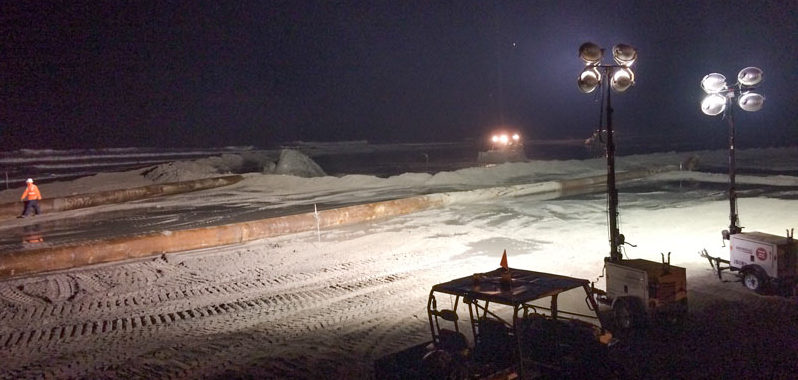
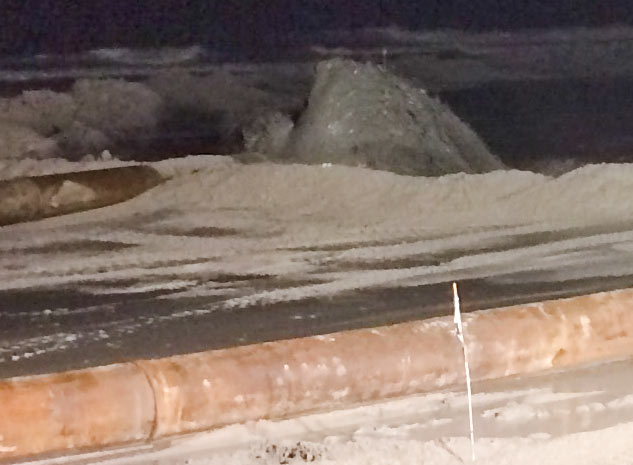
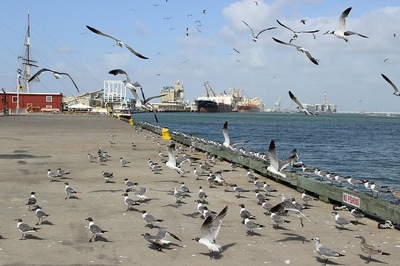
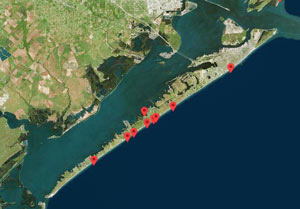 Scott Packard assures KHOU this week that the beach advisories put out by the Galveston County Health District lately aren’t related to flesh-eating strains of Vibrio bacteria — the agency has been fielding concerned phone calls in the wake of a Jacinto City man’s
Scott Packard assures KHOU this week that the beach advisories put out by the Galveston County Health District lately aren’t related to flesh-eating strains of Vibrio bacteria — the agency has been fielding concerned phone calls in the wake of a Jacinto City man’s